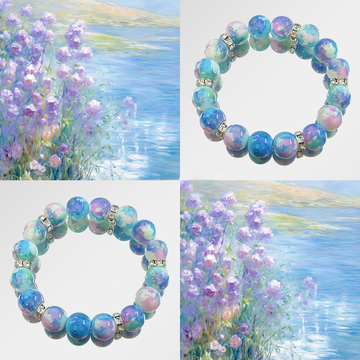Understanding Restoration and Refurbishment Services for Stone Bracelets
Stone bracelets, whether heirlooms or cherished personal accessories, may require professional intervention to address wear, damage, or aesthetic decline over time. Restoration and refurbishment services revive their original beauty while ensuring structural longevity. Below is a detailed guide to the types of services available, the processes involved, and factors to consider when seeking professional care.
Addressing Structural Damage Through Repair Services
Structural issues, such as broken clasps, loose stones, or frayed threads, compromise the bracelet’s durability and safety. Professional repair services focus on reinforcing weak points and restoring functionality:
- Clasp and Fastener Replacement: Worn or broken clasps are replaced with durable components matched to the bracelet’s design. Professionals assess whether the original clasp style can be replicated or if an upgrade is advisable for enhanced security.
- Stone Resetting and Prong Repair: Loose or displaced stones are re-secured using techniques like prong re-tipping, bezel adjustment, or channel realignment. This prevents stone loss and ensures even weight distribution across the bracelet.
- Restringing and Thread Reinforcement: For beaded bracelets, frayed or broken threads are replaced with materials suited to the stones’ weight and wear patterns. Professionals may use reinforced silk, nylon, or metal wire to prevent future breakage.
Enhancing Aesthetics Through Refurbishment
Refurbishment services focus on revitalizing the bracelet’s appearance without altering its original design. These treatments address discoloration, dullness, or surface wear:
- Polishing and Surface Restoration: Professionals use gentle abrasives or ultrasonic tools to remove tarnish, scratches, or oxidation from metal components. For stones, specialized polishing cloths or mild cleaning solutions restore luster without causing damage.
- Color and Luster Enhancement: Porous stones like turquoise or lapis lazuli may benefit from oil treatments to deepen color and prevent cracking. Professionals apply natural oils sparingly to avoid altering the stone’s natural properties.
- Patina and Finish Preservation: For bracelets with intentional aging (e.g., oxidized silver), refurbishment includes techniques to maintain or restore the patina while addressing surface flaws. This ensures the piece retains its intended aesthetic.
Customization and Adaptation Services
Beyond repair and refurbishment, professionals may offer services to adapt the bracelet to modern preferences or functional needs:
- Resizing and Adjustment: Bracelets that are too loose or tight can be resized by adding or removing links, beads, or adjusting the clasp position. Professionals ensure resizing does not compromise the bracelet’s structural integrity.
- Component Upgrades: Outdated clasps, findings, or decorative elements can be replaced with contemporary alternatives. For example, a toggle clasp might be swapped for a magnetic closure for ease of use.
- Design Modifications: In some cases, professionals may collaborate on minor design changes, such as adding accent stones or reconfiguring bead patterns. These modifications respect the original piece while enhancing its visual appeal.
Factors to Consider When Choosing a Service Provider
Selecting the right professional ensures your bracelet receives care tailored to its materials, history, and sentimental value:
- Expertise in Stone and Metal Types: Look for providers experienced with the specific stones and metals in your bracelet. For instance, soft stones like opal require gentler handling than durable quartz.
- Transparency in Processes: Choose professionals who explain repair methods, potential risks, and expected outcomes. For example, they should clarify whether refurbishment will alter the stone’s appearance or require repeated treatments.
- Preservation of Originality: Prioritize services that aim to restore rather than replace original components, unless replacement is necessary for safety or durability. Discuss options for retaining vintage elements, such as aged clasps or patina.
By understanding the range of restoration and refurbishment services available, you can make informed decisions to preserve your stone bracelet’s beauty and functionality. Whether addressing structural damage, enhancing aesthetics, or adapting the design, professional care ensures your piece remains a cherished accessory for years to come.







